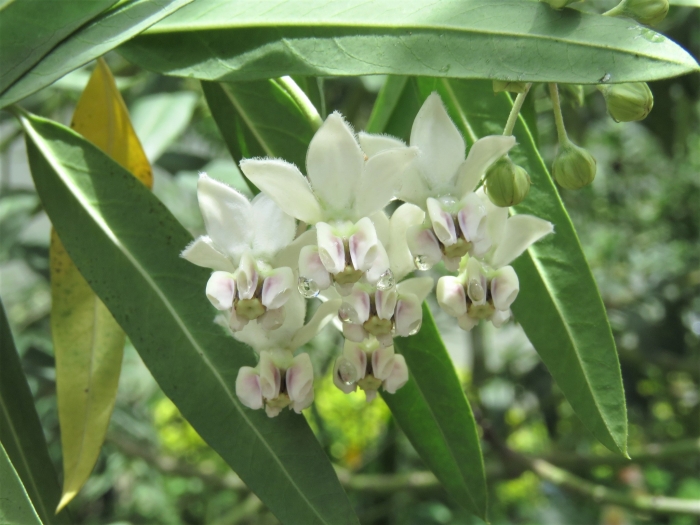Balloon Plant Milkweed
(Gomphocarpus physocarpus)
Balloon Plant Milkweed (Gomphocarpus physocarpus)
/
/

Juan Carlos Caicedo Hernández
CC BY 4.0
Image By:
Juan Carlos Caicedo Hernández
Recorded By:
Copyright:
CC BY 4.0
Copyright Notice:
Photo by: Juan Carlos Caicedo Hernández | License Type: CC BY 4.0 | License URL: http://creativecommons.org/licenses/by/4.0/ | Rights Holder: Juan Carlos Caicedo Hernández | Publisher: iNaturalist | Date Created: 2019-06-08T12:03:08-07:00 |
































































Estimated Native Range
Summary
Gomphocarpus physocarpus, commonly known as Balloon Plant Milkweed, is a deciduous perennial herb native to open woodlands, grasslands, and scrub areas in Southern Africa. It typically grows to over six feet in height and is known for its unique, inflated, balloon-like seed pods. The plant blooms in the warm months, producing clusters of small, intricate flowers with white hoods and a diameter of about 1 cm. These flowers are not particularly showy but are valued for their ability to attract pollinators, especially butterflies such as the monarch, which use the plant as a host for their caterpillars.
Balloon Plant Milkweed is appreciated for its unique seed pods that add an ornamental quality to gardens. It is often used in butterfly gardens, mixed borders, and as a specimen plant. The milky latex produced by the leaves and stems is toxic and serves as a defense mechanism against herbivores. This plant is drought-tolerant and thrives in sandy, well-drained soils, requiring full sun to perform best. While it prefers moderate moisture, it can tolerate low water conditions once established. Gardeners should be cautious as Gomphocarpus physocarpus can become invasive outside its native range, particularly in the United States. It is recommended to consult local regulations before planting.CC BY-SA 4.0
Balloon Plant Milkweed is appreciated for its unique seed pods that add an ornamental quality to gardens. It is often used in butterfly gardens, mixed borders, and as a specimen plant. The milky latex produced by the leaves and stems is toxic and serves as a defense mechanism against herbivores. This plant is drought-tolerant and thrives in sandy, well-drained soils, requiring full sun to perform best. While it prefers moderate moisture, it can tolerate low water conditions once established. Gardeners should be cautious as Gomphocarpus physocarpus can become invasive outside its native range, particularly in the United States. It is recommended to consult local regulations before planting.CC BY-SA 4.0
Plant Description
- Plant Type: Herb
- Height: 4-6 feet
- Width: 2-3 feet
- Growth Rate: Rapid
- Flower Color: White
- Flowering Season: Summer
- Leaf Retention: Deciduous
Growth Requirements
- Sun: Full Sun
- Water: Medium
- Drainage: Medium, Fast
Common Uses
Bee Garden, Bird Garden, Butterfly Garden, Deer Resistant, Drought Tolerant, Hummingbird Garden, Low Maintenance, Potted Plant, Showy Flowers, Street Planting
Natural Habitat
Native to open woodlands, grasslands, and scrub areas in Southern Africa
Other Names
Common Names: Balloon Milkweed, Balloon Cottonbush, Narrow-Leaf Cottonbush, Swan Plant, Wild Cotton, Bladderbush, Balloon Cotton-Bush, Balloonplant, Hairy Balls, Bishop’s Balls
Scientific Names: , Gomphocarpus physocarpus, Asclepias physocarpa, Asclepias brasiliensis, Gomphocarpus brasiliensis, Gomphocarpus fruticosus f. brasiliensis,
GBIF Accepted Name: Gomphocarpus physocarpus E.Mey.